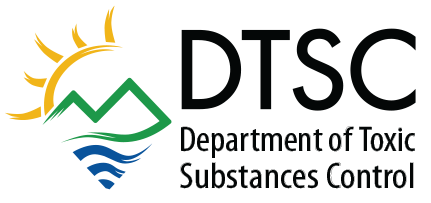DTSC SB20 Testing Results for LCD Monitors and Laptop Computers Fact Sheet
Electronic Manufacturers and Retailers
Background
Senate Bill 20 (SB 20) (Sher), known as the Electronic Waste Recycling Act of 2003, established a statewide program to promote and fund the collection and recycling of hazardous electronic devices beginning July 1, 2004. Under the new law, retailers will collect an advance recycling fee on covered electronic devices at the time of purchase.
The money collected will be used to fund an electronic waste recycling program that reimburses authorized electronic wastes collectors and recyclers. The California Department of Toxic Substances Control (DTSC) and the California Integrated Waste Management Board (CIWMB) jointly administer the program. SB 20 identifies covered electronic devices as cathode ray tubes (CRTs), flat panel screens, and other similar devices that DTSC determines to be hazardous. DTSC’s Hazardous Materials Laboratory is now testing consumer electronic devices to
determine if they are hazardous.
Additional Hazardous Devices
A preliminary report on the results of recent toxicity testing on laptop computers and liquid crystal display (LCD) desktop computer monitors indicate that these devices contain hazardous levels of copper and lead. The determination means that these devices will join CRTs as covered devices regulated under SB 20.
How Were the Devices Tested?
The lab’s findings are available in a report entitled “Determination of Regulated Elements in Laptop Computers and LCD Desktop Monitors for SB 20.” The report details how laptop computers and LCD monitors of different brands and models were analyzed. Testing methods included the Toxicity Characteristic Leaching Procedure and the California Waste Extraction Test. The results of these tests were compared to the hazardous waste regulatory thresholds for each analysis.
For More Information
The SB 20 regulations and related information are available on DTSC’s Web site’s Laws page and on California Legislative Information’s site under Health and Safety Code, Division 20, Chapter 6.5, and Westlaw under Title 22 Division 4.5.
For Assistance & Contacts
For more information and questions, please direct them to our Regulatory Assistance Officers using the information below. If calling from outside California, please call the “Outside CA” telephone number provided:
Toll-Free in CA: 800-728-6942 or 800 72-TOXIC
Outside CA: 916-324-2439
Email: RAO@dtsc.ca.gov
For assistance or additional information, please contact the DTSC Office nearest you. For a list of all offices, go to our Office Address and Phone Numbers web page.
*Disclaimer
This fact sheet does not replace or supersede relevant statutes and regulations. The information contained in this fact sheet is based upon the statutes and regulations in effect as of the date of the fact sheet. Interested parties should keep apprised of subsequent changes to relevant statutes and regulations.
Hazardous Waste Links
- Hazardous Waste Home
- Certified Appliance Recycler (CAR) Program
- CUPAs
- Defining Hazardous Waste
- Electronic Waste (E-Waste)
- Enforcement and Emergency Response Division
- Facilities (TSDFs)
- Generator Improvements Rule
- Generators
- Hazardous Waste ID Numbers
- Hazardous Waste Management Plan
- Hazardous Waste Manifests
- Hazardous Waste Tracking System
- Household Hazardous Waste
- Metal Recycling
- Metal Shredding Facilities and Wastes
- Permitting
- Toxics in Products
- Transporters
- Universal Waste
- Form 1358
- California Hazardous Waste Codes
Hazardous Waste Related Links
- Annual/Biennial Reports
- Annual Fee Summary
- Customer Billing Portal (Cost Recovery)
- DTSC Advisory on the Management of Spent Fuels
- EnviroStor
- Hazardous Waste Publications
- Find a Registered Hazardous Waste Transporter
- Hazardous Waste Policies & Procedures
- Hazardous Waste Project Documents
- Imports and Exports of Hazardous Waste
- Kettleman Hills Facility
- Land Use Restriction Sites
- Office of Criminal Investigations
- PV Modules (Solar Panels)
- Regulatory Assistance Office
- Report an Environmental Concern
- Retail Waste
Connect / Contact Us
Office Locations / Map
Sign up for an E-List
Regulatory Assistance Officers
Statewide Campaigns/Alerts
Report an Environmental Concern
Amber Alert
California Grants Portal
Register to Vote
Save Our Water.com



 Katherine M. Butler, MPH
Katherine M. Butler, MPH